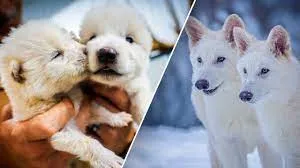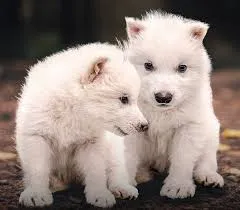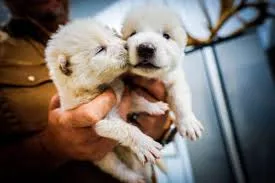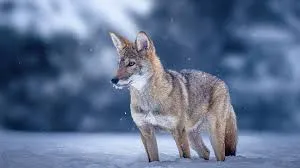
Introduction: Engineering the Dire Wolf Look-Alike
The wolf pups, aged between three to six months, are covered in long white fur, possess strong jaws, and weigh approximately 80 pounds — on track to reach a weight of 140 pounds when fully grown, according to a report from researchers at Colossal Biosciences released on Monday.



What Are Dire Wolves?
Dire wolves, which disappeared over 10,000 years ago, are significantly larger than gray wolves, who are their closest living descendants today.
How Scientists Engineered the Pups
Next, the scientists collected blood cells from a living gray wolf and genetically modified them at 20 different locations using CRISPR, as stated by Colossal’s chief scientist Beth Shapiro. The modified genetic material was then introduced into an egg cell taken from a domestic dog. Afterward, the embryos were implanted into domestic dog surrogates, resulting in the birth of genetically engineered pups 62 days later.
CRISPR and Ancient DNA

Colossal scientists gained insight into specific traits that belonged to dire wolves by analyzing ancient DNA extracted from fossils. The researchers investigated a dire wolf tooth dated to 13,000 years ago discovered in Ohio and a skull fragment from 72,000 years ago found in Idaho, both of which are part of museum collections.
Limitations of De-Extinction
Experts in the field noted that this latest endeavor does not imply that dire wolves will make a return to North American grasslands in the near future.
“What you can achieve now is only to create something that resembles another species superficially— not to completely revive extinct species,” explained Vincent Lynch, a biologist from the University at Buffalo who did not participate in the study.
Although the pups may look like young dire wolves, “they will likely never master the crucial skills needed to hunt a giant elk or large deer,” as they will lack the chance to observe and learn from wild dire wolf parents, noted Colossal’s chief animal care expert Matt James.
Red Wolf Cloning for Conservation

Colossal also shared today that it successfully cloned four red wolves using blood samples taken from the critically endangered red wolf population in the southeastern U.S. The goal is to enhance genetic diversity within the small captive red wolf population that scientists are working to breed and preserve.
Scientific and Ethical Considerations

This technology may be useful for conserving other species since it is less invasive than alternative cloning methods, according to Christopher Preston, a wildlife expert from the University of Montana who was not involved in the study. However, he pointed out that it still necessitates sedating a wild wolf for a blood draw, which is no easy task.
Colossal CEO Ben Lamm mentioned that the team met with officials from the U.S. Interior Department in late March regarding this project. Interior Secretary Doug Burgum celebrated the work on X on Monday, calling it a “thrilling new era of scientific wonder,” even though external scientists highlighted the challenges in restoring historical ecologies.
Conclusion: A Glimpse Into the Future of Conservation
“Any ecological role the dire wolf fulfilled before its extinction cannot be performed in today’s existing ecosystems,” stated Lynch from Buffalo.
People Also Ask (FAQ Style Section):
- Can dire wolves really be brought back to life?
No, current technology only allows scientists to create animals that resemble extinct species genetically and physically, but not fully revive them. - What is Colossal Biosciences trying to achieve?
They aim to genetically engineer animals that resemble extinct species and apply the technology to conservation efforts. - How were the dire wolf traits introduced into the wolf pups?
Through CRISPR editing of gray wolf DNA, followed by embryo implantation into dog surrogates. - Why is cloning red wolves important?
It helps increase the genetic diversity of the critically endangered red wolf population in captivity. - What are the ecological concerns with reviving extinct species?
Experts warn that past ecological roles may not fit within today’s ecosystems, making full ecological restoration unlikely.


